Analysis
See the Top 7 Booths at Art Cologne 2016
On its 50th edition, the fair stayed fresh thanks to these risk-takers.
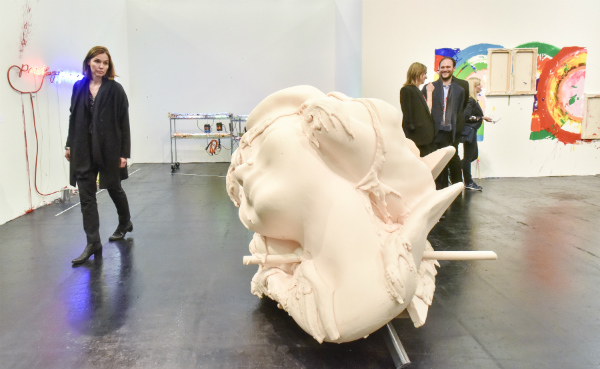
Photo: Art Cologne
On its 50th edition, the fair stayed fresh thanks to these risk-takers.

Hili Perlson

The 50th edition of Art Cologne, the oldest fair for modern and contemporary art, opened its doors for a VIP preview and vernissage yesterday to much fanfare. By early afternoon, the aisles were abuzz with visitors, and early sales were reported on all three levels of the fair, a spatial arrangement which makes a clear distinction between classical modern, established contemporary, and young galleries (this restructuring of the floor plan was introduced last year and was well received across the board).
Art Cologne is a predominantly German affair, where collectors can find artworks by leading German artists such as Georg Baselitz, Gerhard Richter, and Sigmar Polke; expressionist paintings from the turbulent era between the two world wars; and also lesser-known postwar and young emerging artists. If last year’s iteration of the fair had a clear trend towards showing ZERO artists and a fresh feel due to the introduction of the new floor plan, this year’s edition saw many galleries opting for safe presentation of their programs. If you knew the gallery, there were little surprises.
There were, however, some risk takers; galleries that presented well-curated booths, difficult-to-sell but important works, or offered delightful discoveries, and it was thanks to booths such as these that the fair managed to steer clear of looking its age.

Installation view of “Sacred Atomic Systems & Advances in Psychophysics” by Thomas Zipp (Galerie Guido W. Baudach) and Adelhyd van Bender (Delmes & Zander) art Art Cologne 2016
Photo: Hili Perlson
1. Galerie Guido W. Baudach and Delmes & Zander gallery: Collaboration booth showing Thomas Zipp and Adelhyd van Bender
The fair’s third level offers contemporary art galleries the opportunity to stage collaborative exhibitions, and pairing these two artists was a triumphant curatorial feat. Titled “Sacred Atomic Systems & Advances in Psychophysics,” the presentation brings together artist Thomas Zipp, whose work stem from investigations of consciousness, brain activity, and mental illness (some viewers may recall his haunting presentation at the Palazzo Rossini for the 2013 Venice Biennale) and the obsessively prolific Adelhyd van Bender, a recluse who died of a cancerous tumour in 2014, which he considered to be the physical evidence of his feminine side (his solo show was one of the highlights of last year’s Berlin Gallery Weekend). Adelhyd developed a cryptic system of signs which filled the pages upon pages of correspondence he had kept with different government bodies. Both artists take a systematic approach to their questioning of the place of the individual, mining larger existential questions through applied or thought-up scientific methods. Although van Bender is increasingly being shown in contexts other than that of “outsider art,” his works are still very reasonably priced, starting at €800, while Zipp’s works at the booth start at 10 times that.
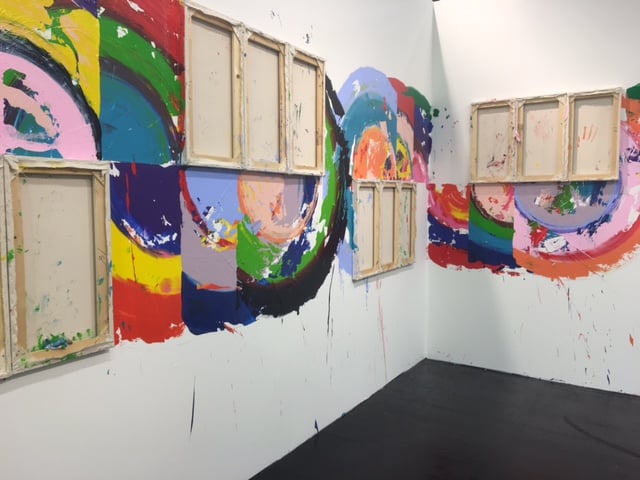
Richard Jackson created a temporary site-specific wall painting for Art Cologne.
Photo: Hili Perlson.
2. Hauser & Wirth: Richard Jackson, Paul McCarthy, and Jason Rhoades
To mark the recent opening of Hauser Wirth & Schimmel in Los Angeles, Hauser & Wirth curated a presentation dedicated to the city, with three artists who influenced one another and informed each other’s boundary-pushing work. Richard Jackson created a site-specific multi-colored wall painting at the fair, which is meant to be sold as a commission with prices depending on size. Jason Rhoades studied under Jackson and MacCarthy, and the gallery placed individual works by the three artists in relation to each other, and a series of collaborative works created by MacCarthy and Rhoades lined the outer walls of the booth. Among the bright neon colors that dominated the presentation, a subtle yet definite highlight was a desk designed by Rhoades based on Gerhard Richter’s 1967 painting Kleiner Akt. Inspired by the underwear worn by the female figure in the painting, the textile-covered top is stretched across the leather and aluminium table with suspenders placed on its underside.
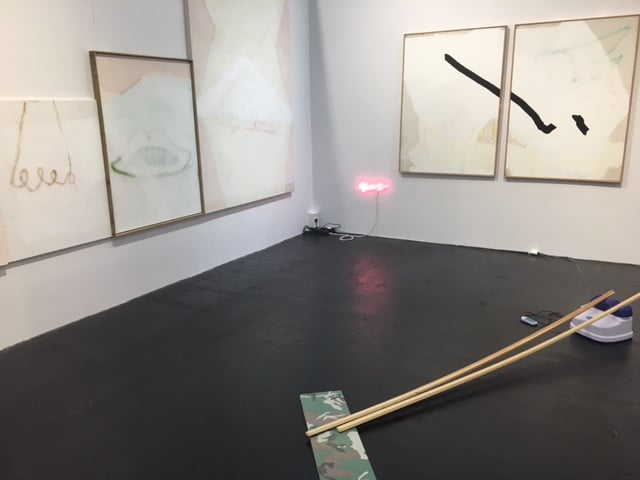
Installation view of Malte Zenses at Kadel Willborn, Art Cologne 2016.
Photo: Hili Perlson.
3. Kadel Willborn: Malte Zenses
There were a few participants in Art Cologne’s New Positions program—a sponsored competition section spread across the fair spotlighting young artists—who were worth mentioning, but the young German artist Malte Zenses, a student of Andreas Schulze, offered a refreshingly well-balanced mix of personal autobiography and nonchalant humor. Charting his recent travels to upstate New York and first-ever encounters with reggaeton parties, Zenses paintings include fragments of signs and graffiti, but also a Google Maps tracing of his route, all abstracted into ciphers of his experience. An installation consisting of a kinetic sculpture and neon work—I love u dance and #gal, both 2015—channels a dancing body with the use of an electronic massage device.
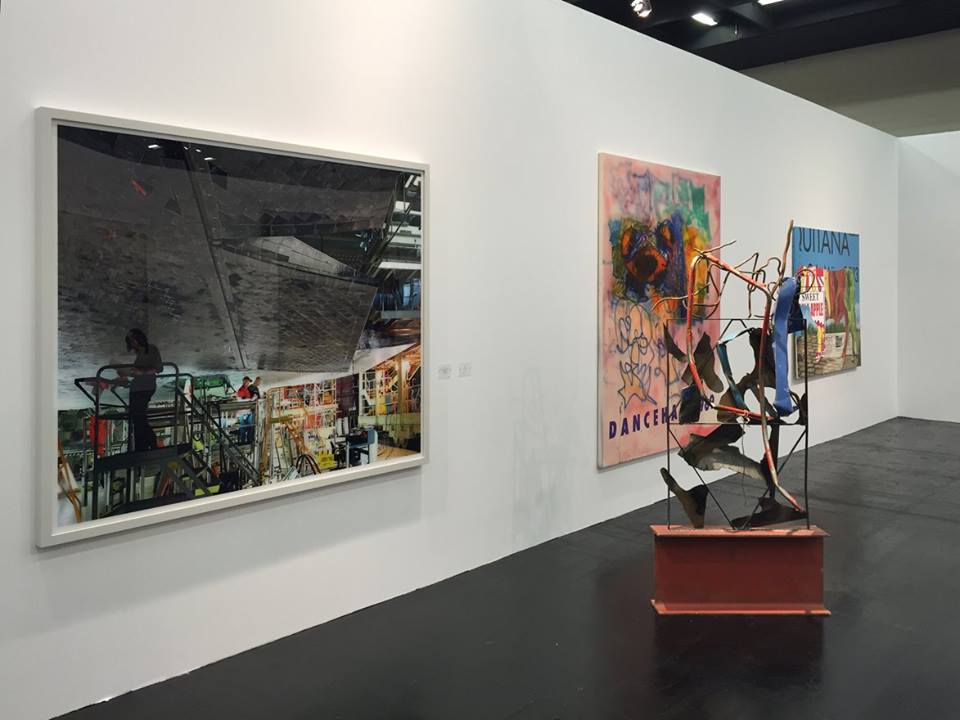
Installation view of Galerie Max Hetzler at Art Cologne 2016.
Photo: Courtesy Max Hetzler.
4. Galerie Max Hetzler: Ida Ekblad and Thomas Struth
The veteran gallery brought a selection of their artists to the fair, including André Butzer, Navid Nuur, and Albert Oehlen, with the photo Space Shuttle 2 (2008) by Thomas Struth making one of the booth’s priciest works at €108,000. No matter how strong its enthralling quality, seeing a Struth at a quintessentially German fair can feel fatiguing. However, through positioning two charming works by one of their younger artists, Ida Ekblad, next to the photograph, the gallery created a fascinating visual dialogue between the scavenged discarded metal in Ekblad’s sculpture ($48,000) and the scaffolding and metal in the Struth work, allowing for a smooth transition in the hanging to a bright painting by the Oslo-based artist.
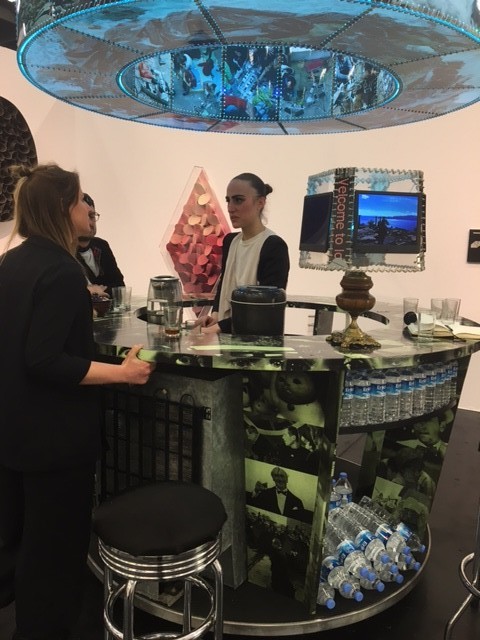
Installation view at Van Horn gallery, Art Cologne 2016.
Photo: Hili Perlson.
5. Van Horn: Claus Föttinger
Considering the political tensions in Germany at the moment and the devastating refugee crisis in Europe, it was somewhat disappointing to see that hardly any artists shown at the fair responded to current events, save for the booth of Düsseldorf gallery Van Horn. In its center, artist Claus Föttinger set up a functioning bar, serving Turkish tea and Raki, which he first constructed in the late 1990s. The early version of the work dealt with political themes that shook Germany in the 1960s, the era following the country’s so-called de-nazification. Föttinger added an upper level to the bar—hence the work’s title 60/99/16 which refers to its evolution (priced together at €60,000)—which culls images from media reports on the current refugee crisis, including also videos screened on tablets, which the artist filmed himself.
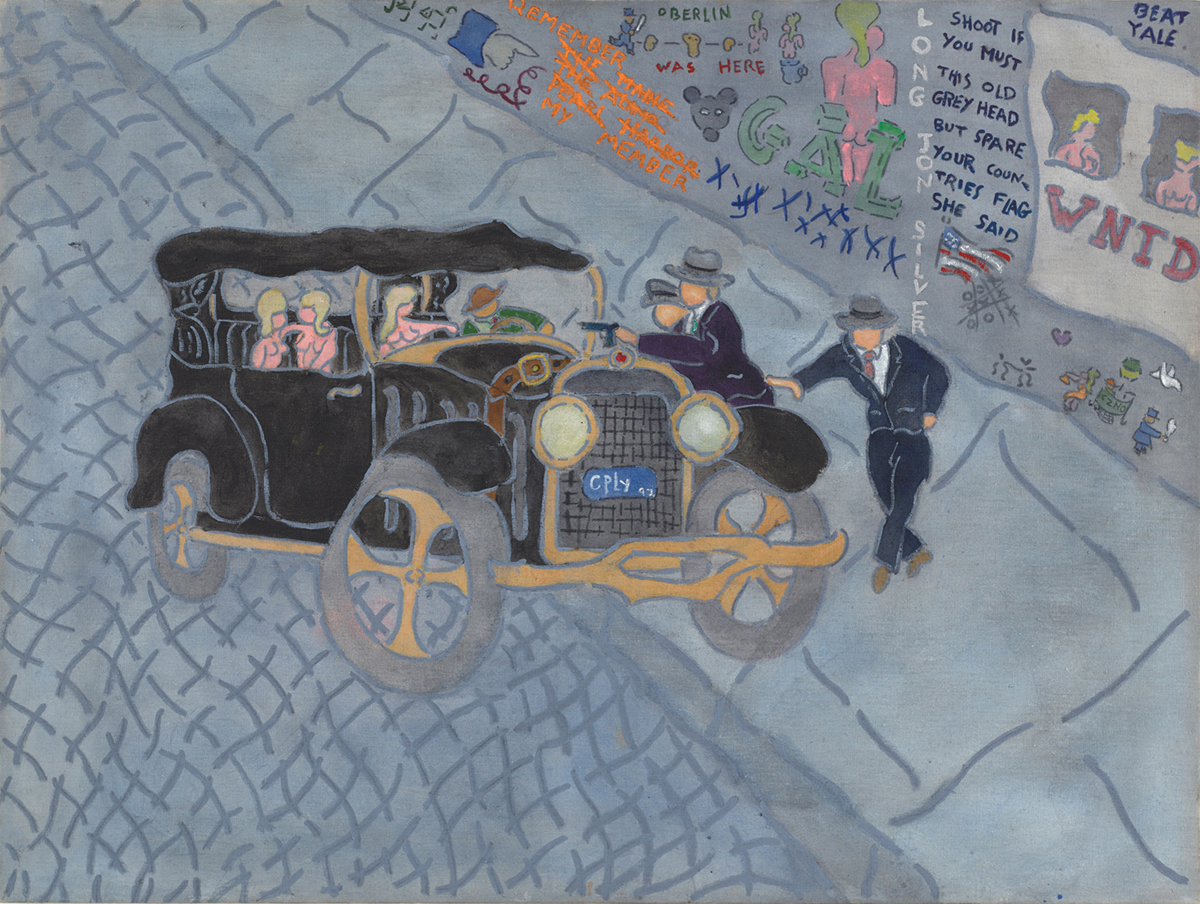
William N. Copley, Some Sort of Crime (1992).
Photo: courtesy Galerie Klaus Gerrit Friese, Berlin.
6. Galerie Klaus Gerrit Friese: CPLY
Coinciding with the current show dedicated to the American painter, writer, gallerist, and collector William N. Copley (also known as CPLY) at the Menil Collection—curated by Prada Foundation’s Germano Celant—the gallery is showing a number of paintings by the relentless American artist. The later painting Some Sort of Crime (1992), priced at €140,000, is an example of a convergence of personal and national history in CPLY’s work. The show at the Menil Collection will travel to the Prada Foundation in Milan this fall, so this is a good time to delve into the artist’s work, now made more accessible through the exhibition’s catalogue.
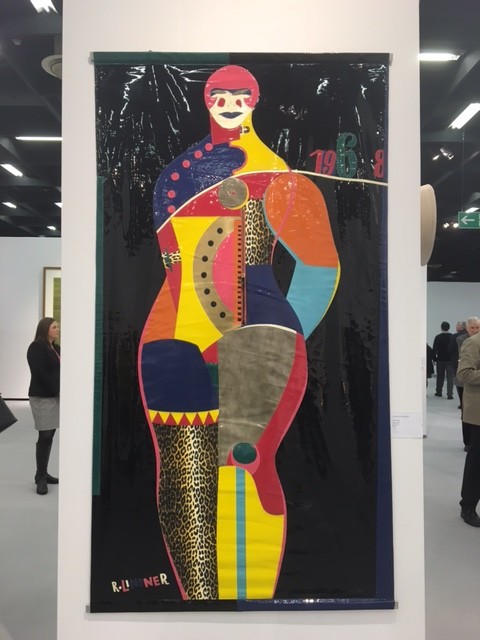
Installation view of Richard Lindner’s Banner (1968).
Photo: Hili Perlson.
7. Galerie Klaus Benden: Richard Lindner
The Cologne-based gallery channeled the sexual revolution of the 1960s in a vibrant booth filled with Tom Wesselmann’s nudes, drawings of naughty cherubs by Andy Warhol, and Mel Ramos’s figurative combinations of female nudes depicted atop consumer goods. But a work by German-American artist Richard Lindner stole the show: Banner (1968), a latex and felt piece, shows a full, voluptuous figure that, although not explicit, exudes sexual power. Priced at €18,000, another edition of the work—of which 20 were planned but it is unclear how many were in fact realized—is in the collection of the Ludwig Museum, and was included in their recent show “Ludwig Goes Pop.”
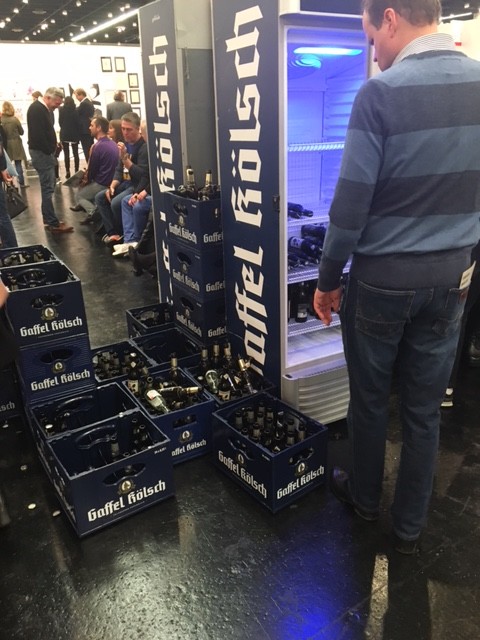
Kölsch
Photo: Hili Perlson
8. Bonus booth: Kölsch beer
Cologne is proud of its locally brewed Kölsch, and as every year during the fair’s opening, visitors can grab a cold bottle from a stacked fridge on the third floor. The platform right next to it is one of the most popular spots at Art Cologne, where lively conversations take place and gossip is exchanged—until the bottles run out, that is. We encourage more fairs to adopt this as an addition to the less sociable champagne sipping stands strewn around the art fairs of the world.
Art Cologne takes place from April 14-17, 2016.